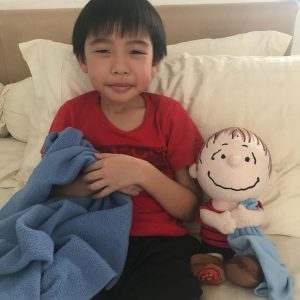Services
- Autism
- Attention Deficit
Hyperactivity
Disorder (ADHD)/
Dyslexia - Learning Disorders
- Specific Language
Impairment (SLI) - Hearing Loss/
Hearing Impairment - Group Sessions for Social Interaction and Classroom Interactions
- Home Visits
- School Visits
- Parent Training/
Shadow Support
Training/
Teacher Training/
Lecturing
SESSIONS FOR AUTISM
One of the first steps in the intervention for autism is to get the attention of the child. The child’s attention to adult-lead activities might be fleeting and very short, but this will the starting point of the journey. During the initial sessions, getting the child to focus on the activity is critical.
When focus is achieved, participation is the next goal. A child who participates is a child who is interested. With interest, learning takes place. Social interaction skills will then develop and increase.
There are some children who may have some behavioural challenges at the start. These will be addressed as focus and behavour are closely interlinked. The aim is to achieve good learning behaviour that will translate to better learning experiences in school.
The sessions will include these important areas and more:
- Focus
- Visual tracking
- Joint attention
- Participation
- Social engagement
- Understanding of instructions
- Speech development
- Language expression
- Thinking skills
Activities are conducted using toys for boys and girls so that the child is exposed to a wide range of language.
The impact of Autism on the family
The impact of autism on a child and his/her family can be devastating. When a family has a child who has autism, the dynamic and the lifestyle of that family are affected, usually hugely.
Autism is a condition which usually exhibits itself in early childhood.
Connecting with the child at home
As a family, we need to connect with a child who has autism. Opportunities may arise through brief moments of social interaction. Through these, we can play with the child, learn with the child and teach the child.
When engagement occurs, the child might identify moments of shared joy and experiences which he/she may find beneficial. When this happens, his/her focus and shared enjoyment with us increase and we are able to teach him/her.
FEATURES OF AUTISM
There are many features of autism. My eldest son, who has autism, displays many of these features since he was born. Some features may include:-
- Lack of Eye Contact
- Inconsistent or No Response to Name Calling
- He/She Doesn’t Call Me “Mummy/Daddy”
- Language Delay
- Atypical (Not Typical) Use of Language
- Speech Prosody – “Talks Like a Robot”
- Echolalia – Repeating What The Child Hears
- Challenges in Social Interactions
- Narrow, Limited Interests in Certain Toys and Activities
- Different quality of play
- Routines
- Difficulty in Adapting to New Environments
- Repetitive behaviours
Lack of Eye Contact
My son had limited eye contact and eye tracking since infancy.
At 5 days old, he was not looking at big, bright, bold objects when the object is moved in front of him within an arm’s length. This is called eye tracking. When he was two weeks’ old, I bought a big, red stuffed Elmo, a character from Sesame Street, to start training him on eye tracking. It helped.
As he grew, his eye contact did not develop as it should. When we spoke to him, he would not turn his body towards us or even look at us. He did not look at people. It was heartbreaking.
Inconsistent or No Response to Name Calling
My son did not respond to his name virtually all the time. We had to call numerous times and even then, he was not likely to turn or respond or acknowledge.
Over the years, this very slowly improved. At the age of 13, he verbally responded when we call him. He replied, “Yes?” when he was out of sight and we called him. When we asked him, “Where are you?”, he would verbally reply and tell us where he was. The feeling we got when he replied was truly wonderful.
HOW TO GET THE CHILD TO RESPOND
One way of getting a child respond to his name calling is to reward the child each time he/she turns when called. Rewards may include a high five, a hug or a kiss. When the child knows that he will get something when called, he might be more willing to respond each time he hears his name.
He/She Doesn’t Call Me “Mummy/Daddy”
Because of the issue with social interaction, children with autism usually do not call out to others to get attention. This might mean that they do not call out “Mummy” or “Daddy”. They do not reach out to others to get them to play together or to share experiences together.
My son started calling me, “Mama”, at the age of 7. I waited 7 years to hear what other mothers of typically developing children hear before their children even turned one year old.
Some parents may be disheartened not being able to experience their child calling them. Some may try to get the child to say the word “Mama” or “Mummy”. The child may be able to repeat this but he may not use it meaningfully to call the mother.
HOW TO GET YOUR CHILD TO CALL YOU
One way around this is to get others in the family to call the mother “Mama” or “Mummy”. The child might be encouraged to copy this behaviour and start calling the mother with the same word.
Language Delay
LANGUAGE EXPRESSION AND LANGUAGE UNDERSTANDING DELAY
“LATE TO TALK”
Some children with autism may be “late to talk”. They might not talk till much later in childhood when they are 3 or 4 years old. Some might struggle with verbal expression much longer.
They might not be able to understand language. For example, they might appear to be ignoring instructions given to them or they might not be able to do what they have been told to do.
LANGUAGE BUT NOT CONVERSATION
“STARTED TALKING EARLY”
In the case of my son, he spoke very early. His first word “at” for “cat” was uttered at 8 months old. He started using plurals (dog/dogs, bird/birds) at the age of 18 months. However, his language was and is delayed in the area of social communication. He cannot have a meaningful conversation with me or anyone else. He has language but his communication and conversation skills are greatly impaired.
“HE CANNOT TELL ME WHAT HE DID IN SCHOOL”
Some children with autism may be able to “talk” but they may not be able to have conversations. They may not be able to reply when asked what he/she did in school, what he/she ate for lunch or why is he/she upset.
My son is still not able to hold a conversation of several turns. Very often, he still does not respond when being spoken to. His answers are inappropriate. For example, when asked what is his favourite restaurant, he would answer, “Glorious food.” This is not a name of a restaurant, it is what he calls a particular dish at a particular restaurant we went to.
His questions are inappropriate, odd and often repetitive. For example, many times each day he would repeatedly ask, “Why can’t there be 78 arrows on the exit sign?” He would approach complete strangers and ask them this question. A teenager approaching strangers and asking them “weird” questions is not typical behaviour and it often scares people away.
Atypical (Not Typical) Use of Language
CONFUSION BETWEEN THE WORDS “YOU” AND “I”
Atypical use of language is using language in ways that are not typical. One example is mixing up pronouns such as “you” versus “me”. The child might say, “Give to you” when he meant, “Give to me” or “You want this” when he means, “I want this”.
The understanding and appropriate and spontaneous use of these pronouns (“I”, “you”, “he”, “she”) may appear much later in childhood.
Direct copying, for example, when an adult tells the child to say, “I want juice” or “thank you,” is not a spontaneous use of these pronouns. The child might repeat after the adult and say, “I want juice” and “thank you”. but he might not know who “I” in that sentence refers to.
In the case of my son, he finally understood the difference between “you” versus “I” at the age of six. He used to say, “You want Milo” when he meant, “I want Milo”. For two to three years after that, he still had some inconsistencies in using these plurals. Even as a teenager now, he struggles with these pronouns when he tries to say longer sentences with multiple pronouns.
Speech Prosody – “Talks Like a Robot”
Another feature of autism that my son has is that of his speech prosody. He talks like a robot with limited pitch variation.
This is true too of some of the children whom I have taught. Sometimes, they have been described as having an American accent or an Australian accent when they do not have parents or relatives or caregivers from these countries nor have they been exposed to many individuals from these countries. They might have picked it up from television or YouTube videos. However, typically developing children do not take on these accents and have them consistently for years.
Echolalia – Repeating What The Child Hears
Echolalia happens when a child repeats words and phrases spoken to him/her or heard by him/her. Sometimes the child would repeat them out of context and/or at a later time or on another day or week or month.
We were careful not the make our son repeat. For example, we do not tell him, “Say, “Good morning teacher.”” We avoided this approach because we did not want him to develop echolalia where he would repeat everything that we tell him to say but not necessarily with understanding.
Pleasantries such as saying “good morning”, “thank you” and “you’re welcome” may also not be a critical part of language development for an autistic child or a child with language issues. What is critical is the understanding of language and the ability to spontaneously express himself without being prompted to do so.
At the age of 12, our son started responding spontaneously when being greeted hello or when someone said “goodbye” to him. The way he did it appeared so natural and not rehearsed. He genuinely wanted to say hello and goodbye to people. We felt happy.
Challenges in Social Interactions
This could mean that the child looks like he/she is not interested to engage or approach or communicate with any other children or adult around him. He/she may appear aloof and usually on his own. He/she may not respond or react to being called or being invited to join the activities around him. He/she may even react physically when approached or gently pulled towards the group or another person.
“NOT SHY”
For girls, sometimes, this might be construed as being “shy”. However, being “shy” and being autistic may be different. A “shy” girl or boy may have eye contact, may smile when approached, may shake his/her head or look away when asked to join. A child with autism may or may not have these body language expressions.
Narrow, Limited Interests in Certain Toys and Activities
HUMPTY DUMPTY
Some children with autism may have limited interest in some toys. For example, my son liked Humpty Dumpty. He liked Humpty Dumpty from the age of 5 to the age of 10. For many years, he loved this toy. Such prolonged years of interest in a particular toy may be unusual.
“I WANT TO DRAW GRASS’
The child might be interested in only one particular object. My son was fixated with drawing grass. He drew grass repeatedly over and over again for about two to three years before moving on to drawing something else.
Different quality of play
Play development is very important in childhood.
Children start playing through exploration. Babies explore things around them by putting things in their mouths. They might progress to throwing things or toys. Their play develops from solitary play (playing alone) to group play (playing with a group of children). Through their childhood years the type of play and the quality of play change and develop.
Children with autism might not play with a toy in ways that the toy is meant to be played. These might include repeatedly playing with a certain toy in a certain way. For example, my son loves stuffed toys. However, he only plays with them in one way and that is to toss one in the air and catch it repeatedly.
Routines
Some children with autism find it challenging when routines change. Taking a new route to go to the same place may be alarming to them.
HOW TO DEVELOP FLEXIBILITY
As a family, we deliberately made efforts to ensure that our son does not get consumed with routines. Of course, we had general routine such as waking up, breakfast, school, lunch, dinner, and others. However, within that general routine, we made sure that we presented as many varieties as possible.
For example, when he was a year old and when I took him out for his evening walks, I made sure that we took a different route or we start at a different point every time. I also ensured that the language that I speak to him varied. I would say, “Oh, what a nice flower. This flower is nice. Nice, this flower.”
Difficulty in Adapting to New Environments
Some children with autism find it challenging when environments change. Changing to a new school or a new classroom may be difficult for them to accept. They might be so unsettled that they might react physically. They might scream, cry or roll on the ground. They might repeatedly ask to go back to the previous environment that are familiar to them and give them a sense of comfort and security.
“NEW THINGS ARE FUN”
For us, we made sure that we take our son to many different places, many different countries and attend many different activities. We exposed him to as many different experiences as possible.
Repetitive behaviours
Our son was particular about the aircon remote control. It must be placed back in the wall cradle all the time. If anyone were to take it out of the wall cradle, he would quickly grab the remote control and place it back. This is one example among hundreds of things that he was/is particular about and that he repeats all the time. We would take the remote control and place it wherever we wanted until he realised and accepted that we do not have to place it at the exact place that he wanted it to be placed. Different people have different preferences and in general we adapt to others around us. We all give and take.
Repetitive behaviours are sometimes comforting. As adults, we do repeat activities which gives us joy. For example, I enjoy reading the newspapers every morning. I repeat this every weekday morning. Repetitive behaviours are fine as long as they do not disable us from functioning. They also should not paralyse us and stop us from moving on if we are not able to do them on some occasions.
Some chilldren with autism who have repetitive behaviours are sometimes so consumed by them that they are not able to carry on unless that repetitive behaviour has been done numerous times. For example, my son wanted to know why “rm” was used as the short for “room” in some buildings. He kept asking this question repeatedly no matter how many times we have answered it. He asked this question many times a day over many weeks.
Repetitive behaviours can be actions such as repeatedly opening and closing drawers or doors. It can also be verbal repetitions such as the example given above.





